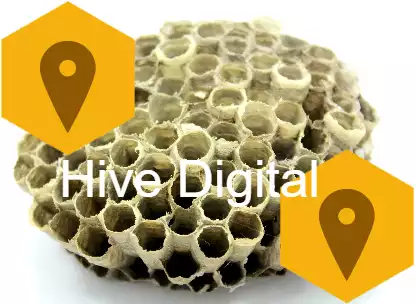As online marketing continues to evolve, businesses of all sizes and industries must stay on top of the latest best practices to be successful and competitive.

Hive online marketing is no exception.
Hive online marketing is an effective approach to reach out to potential customers and increase visibility of a business.
It includes a combination of online strategies such as content marketing, search engine optimization, social media, and email marketing.
In this post, we will discuss the best practices for
Hive online marketing in order to maximize reach and achieve better results.
We will discuss the key points that should be considered when creating a Hive online marketing strategy, how to create effective campaigns and the benefits of Hive online marketing.
By understanding and following the best practices for Hive online marketing, businesses can increase their customer base, increase their visibility, and generate more sales.
Table of Contents Best Practices for Hive Online Marketing
Understand Your Target Audience
Before you can implement a successful online marketing campaign, it is essential to understand your target audience. Knowing who you are trying to reach will help you create the most effective content and messaging to engage them.
Doing research on the demographics and psychographics of your target audience can help you gain insight into their needs, wants, and interests. Additionally, understanding their pain points can help you create more meaningful solutions.
This valuable information should be used to craft your message and determine the best channels to reach your audience.
Research Keywords and Trends
As part of the online marketing process, it is important to research relevant keywords and trends so that you can create and distribute the most appropriate content.
By researching the latest trends in the industry, you can create content that is relevant and engaging to your target audience. Additionally, researching relevant keywords will help boost your content’s visibility on search engine platforms and other online channels. Make sure to use the most up-to-date tools and strategies to ensure the most accurate and up-to-date keyword and trend research.
Leverage Social Media Platforms
Social media is an essential tool for businesses of any size. It offers an opportunity to increase brand visibility and engagement with customers. It can be used to share announcements, industry insights, promotions, and more.
Utilizing the right social media platforms is critical for successful online marketing. Start by researching the channels where your target audience is most active, such as LinkedIn, Instagram, YouTube, and Twitter.
Then create content that is relevant and engaging to this audience. Leverage social media platforms to amplify your message and reach more potential customers. Make sure to use hashtags and influencers to maximize the reach of your content.
Optimize for SEO
Search engine optimization (SEO) is an important part of any online marketing strategy. By optimizing web pages and content for search engine algorithms, you can ensure that your website is appearing in search engine results, and that upon viewing your site, users are able to find what they are looking for quickly and easily. To optimize for SEO, start by researching the most commonly used keywords and phrases related to your business and incorporate these into your website content. Additionally, make sure to create titles and headings that are SEO-friendly, and ensure that all of your web pages have a meta description, which is the brief snippet of text that appears in search engine results.
Test Different Strategies
When it comes to online marketing, testing different strategies is key. This includes testing different ad copy, audience targeting, and website design. By testing different combinations, you can determine which approaches are most effective and determine the best approach for your specific objectives. Additionally, it’s wise to test different strategies on different platforms to determine which channels are most effective for your campaigns. Finally, it’s important to review the data regularly to identify any changes in performance over time, and adjust your strategy accordingly.
Set Clear Goals and Objectives
Establishing clear goals and objectives is a critical step in the Hive Online Marketing process. When objectives are set ahead of time, it helps to focus efforts and resources, allowing for greater efficiency and better results. Additionally, having established objectives and goals also helps to measure progress, as milestones can be tracked and areas of improvement identified. When setting goals, be sure to be specific: for instance, instead of saying “increase website traffic,” it’s more effective to say “increase website traffic by 10% in the next three months.” Doing so will help to keep everyone involved in the project on track.
Utilize Automation Where Possible
Automation can help you save time and energy, allowing you to focus on the tasks that really need your attention. Use automation where possible to take care of mundane tasks such as scheduling social media posts, tracking progress, and managing customer outreach. Automating processes also helps you ensure that all tasks are completed on time and with consistent quality. Utilizing automation is an essential part of successful online marketing, and should not be overlooked.
Monitor Performance and Analytics
Monitoring performance and analytics is essential to the success of any online marketing campaign. To ensure that your hive marketing efforts are generating real returns and achieving your desired outcomes, it is important to track key performance metrics and analyze data related to your campaigns such as website visits, conversions, cost per click, etc. Regularly reviewing these analytics can help you identify areas for improvement in your Hive marketing strategy, and make sure you’re getting maximum value from your campaigns.
Track Your ROI
Tracking your return on investment (ROI) is an important part of any successful online marketing strategy. It helps you understand how your campaigns are performing and whether you’re getting a good return from your investments. Make sure that your team is tracking all the relevant metrics, such as website visits, clicks, leads, and sales. This will help you to accurately measure the impact of your online marketing efforts and make informed decisions on how to best allocate your resources.
Identify Opportunities for Improvement
Identify Opportunities for Improvement: An essential part of an effective online marketing campaign is ongoing analysis of the results. This can help to identify areas where performance could be improved, allowing for the development of strategies to increase efficiency and maximize returns. Regularly reviewing the key metrics and regularly monitoring all campaigns is recommended, so that adjustments can be made quickly and effectively as needed.
To conclude, Hive online marketing is a great way to reach a large audience, connect with potential customers, and increase sales. With the right tools, strategies, and best practices, you can make sure that your Hive campaigns are successful and effective. By keeping your content fresh and engaging, staying up-to-date on the latest trends and technologies, and optimizing your campaigns for success, you can ensure that your Hive online marketing efforts are successful.

